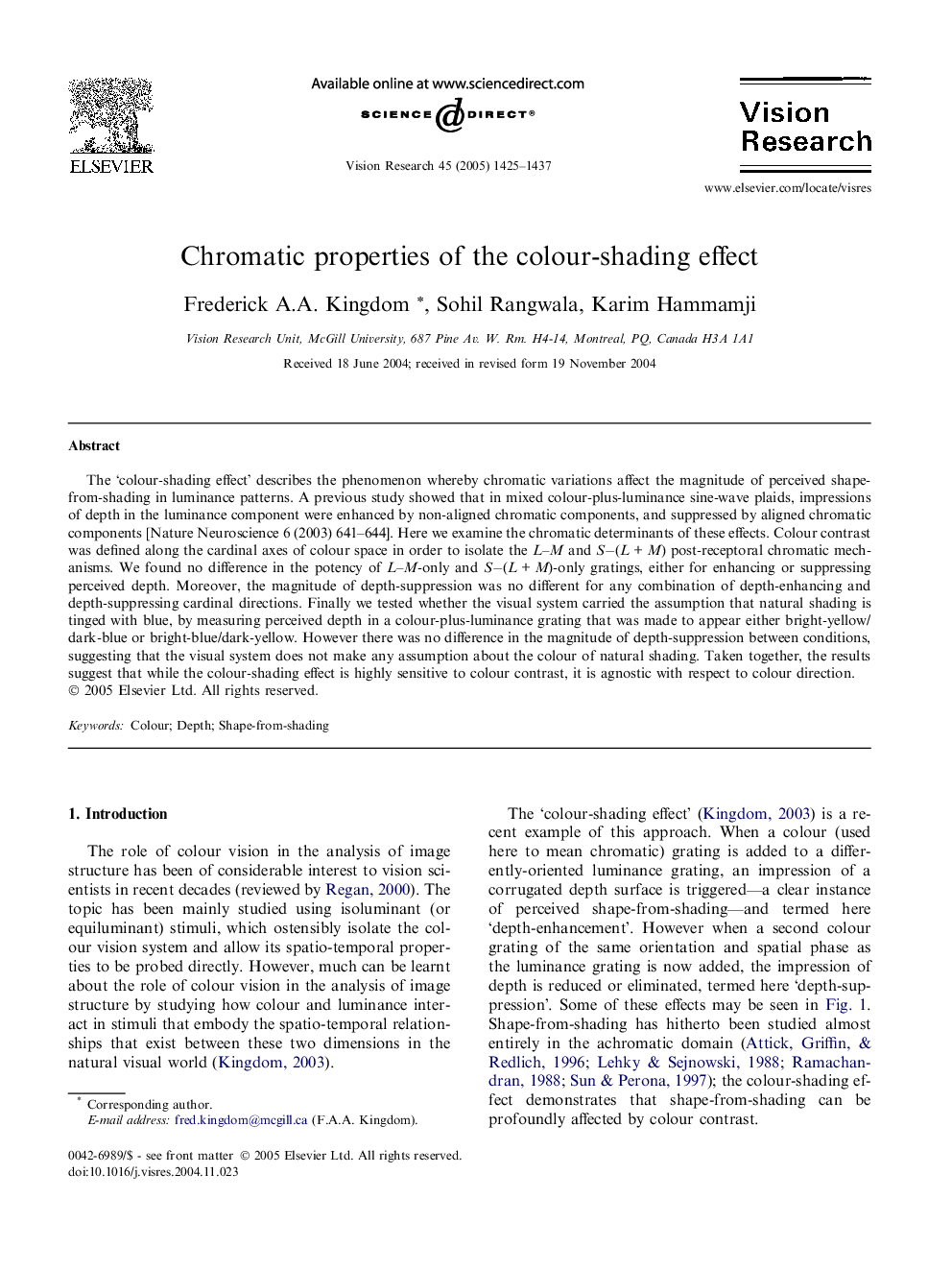| Article ID | Journal | Published Year | Pages | File Type |
|---|---|---|---|---|
| 9348499 | Vision Research | 2005 | 13 Pages |
Abstract
The 'colour-shading effect' describes the phenomenon whereby chromatic variations affect the magnitude of perceived shape-from-shading in luminance patterns. A previous study showed that in mixed colour-plus-luminance sine-wave plaids, impressions of depth in the luminance component were enhanced by non-aligned chromatic components, and suppressed by aligned chromatic components [Nature Neuroscience 6 (2003) 641-644]. Here we examine the chromatic determinants of these effects. Colour contrast was defined along the cardinal axes of colour space in order to isolate the L-M and Sâ(LÂ +Â M) post-receptoral chromatic mechanisms. We found no difference in the potency of L-M-only and Sâ(LÂ +Â M)-only gratings, either for enhancing or suppressing perceived depth. Moreover, the magnitude of depth-suppression was no different for any combination of depth-enhancing and depth-suppressing cardinal directions. Finally we tested whether the visual system carried the assumption that natural shading is tinged with blue, by measuring perceived depth in a colour-plus-luminance grating that was made to appear either bright-yellow/dark-blue or bright-blue/dark-yellow. However there was no difference in the magnitude of depth-suppression between conditions, suggesting that the visual system does not make any assumption about the colour of natural shading. Taken together, the results suggest that while the colour-shading effect is highly sensitive to colour contrast, it is agnostic with respect to colour direction.
Keywords
Related Topics
Life Sciences
Neuroscience
Sensory Systems
Authors
Frederick A.A. Kingdom, Sohil Rangwala, Karim Hammamji,
